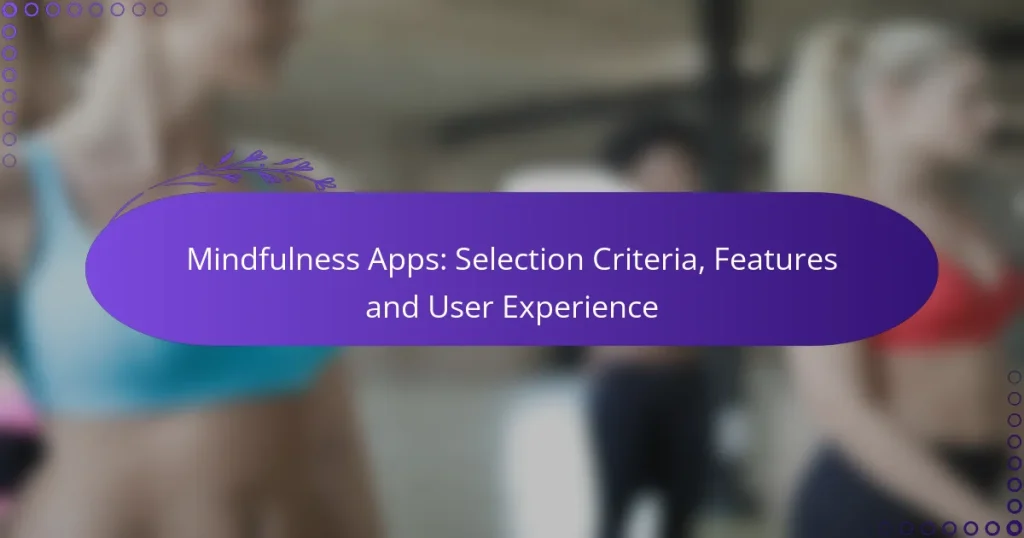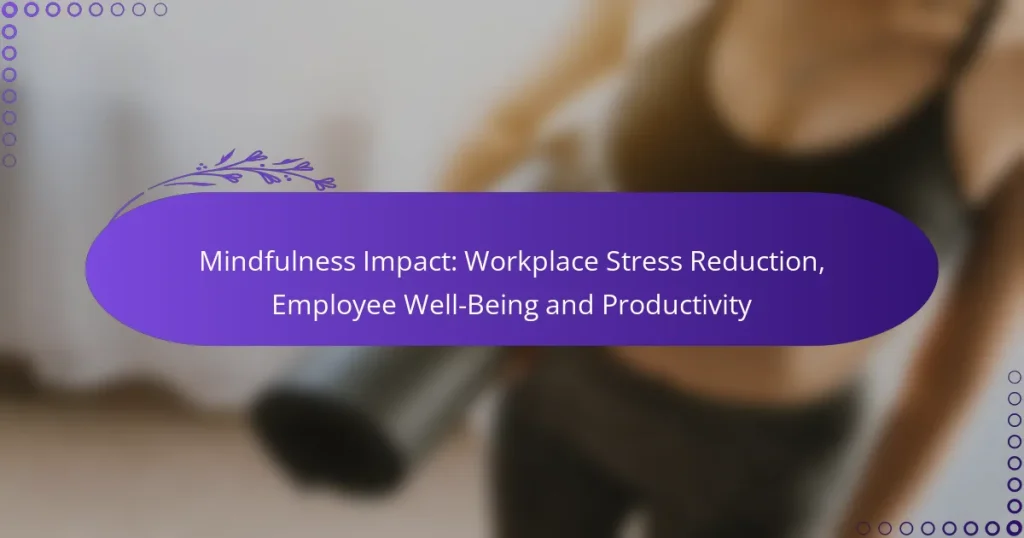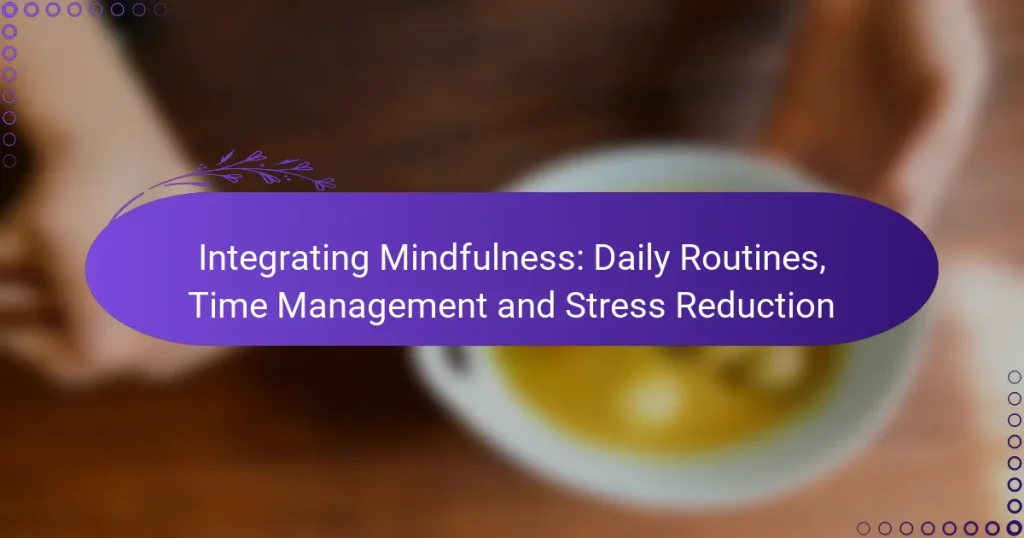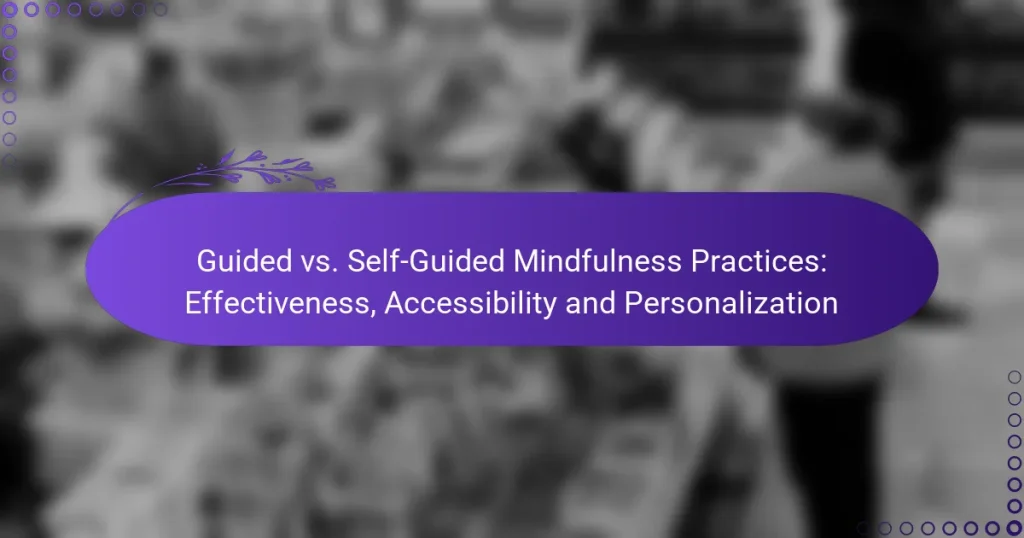Mindfulness techniques are powerful tools for managing stress, as they encourage individuals to cultivate awareness and stay present in the moment. By practicing mindfulness, one can effectively regulate thoughts and emotions, leading to a more tranquil and focused mindset. These techniques not only alleviate stress but also enhance emotional resilience and overall well-being.
Mindfulness Meditation: Quick Strategies for Busy Parents and Stress Relief
Mindfulness Benefits: High-Pressure Environments, Performance Enhancement and Resilience
Mindfulness vs. Traditional Therapy: Effectiveness, Approaches and Suitability
Mindfulness Impact: Workplace Stress Reduction, Employee Well-Being and Productivity
Integrating Mindfulness: Daily Routines, Time Management and Stress Reduction
Guided vs. Self-Guided Mindfulness Practices: Effectiveness, Accessibility and Personalization
What mindfulness techniques can help manage stress?
Mindfulness techniques can effectively reduce stress by promoting awareness and presence in the moment. These practices help individuals manage their thoughts and emotions, leading to a calmer and more focused state of mind.
Breathing exercises
Breathing exercises are simple yet powerful tools for stress management. They involve focusing on your breath to help calm the mind and body. Common techniques include deep belly breathing, where you inhale deeply through your nose, allowing your abdomen to expand, and then exhale slowly through your mouth.
To practice, find a quiet space, sit comfortably, and close your eyes. Inhale for a count of four, hold for a count of four, and exhale for a count of six. Repeat this cycle for several minutes to experience a reduction in stress levels.
Body scan meditation
Body scan meditation involves paying attention to different parts of your body, promoting relaxation and awareness. This technique helps identify areas of tension and encourages the release of stress stored in muscles.
To perform a body scan, lie down in a comfortable position and focus on each part of your body, starting from your toes and moving up to your head. Spend a few moments on each area, noticing sensations without judgment. This practice can take anywhere from 10 to 30 minutes.
Guided imagery
Guided imagery uses visualization to create a peaceful mental environment, helping to alleviate stress. This technique often involves imagining a serene place, such as a beach or forest, and immersing yourself in the details of that setting.
To practice guided imagery, find a quiet space, close your eyes, and take deep breaths. Visualize your chosen location, focusing on the sights, sounds, and smells. Spend about 10-15 minutes in this mental space to enhance relaxation and reduce stress.
Mindful walking
Mindful walking combines physical movement with mindfulness, allowing you to connect with your surroundings and your body. This practice encourages you to focus on the sensations of walking, such as the feeling of your feet on the ground and the rhythm of your breath.
To engage in mindful walking, choose a quiet path and walk slowly, paying attention to each step. Notice the sights, sounds, and smells around you. Aim for a 10-20 minute walk to help clear your mind and reduce stress.
Progressive muscle relaxation
Progressive muscle relaxation (PMR) is a technique that involves tensing and then relaxing different muscle groups in the body. This method helps to release physical tension and promotes a sense of calm.
To practice PMR, sit or lie down comfortably. Start with your feet, tense the muscles for a few seconds, then release. Gradually move up through your body, including your legs, abdomen, arms, and face. Spend about 15-20 minutes on this practice to effectively manage stress.
How effective are mindfulness techniques for stress relief?
Mindfulness techniques are highly effective for stress relief, helping individuals manage their stress responses and improve overall well-being. By focusing on the present moment and cultivating awareness, these practices can significantly reduce stress levels and enhance emotional resilience.
Reduces anxiety levels
Mindfulness techniques can lower anxiety levels by promoting relaxation and reducing negative thought patterns. Practices such as meditation and deep breathing exercises encourage individuals to observe their thoughts without judgment, which can diminish feelings of anxiety over time.
Regular engagement in mindfulness can lead to a noticeable decrease in anxiety symptoms, often within a few weeks. Individuals may find it helpful to set aside just 10-15 minutes daily for mindfulness exercises to experience these benefits.
Improves emotional regulation
Mindfulness enhances emotional regulation by fostering a greater awareness of one’s emotions and reactions. This awareness allows individuals to respond to stressors more thoughtfully rather than reacting impulsively, leading to healthier emotional responses.
Practicing mindfulness can help individuals identify triggers and develop coping strategies. Techniques such as journaling or guided imagery can be effective in processing emotions and improving emotional stability.
Enhances focus and concentration
Mindfulness techniques improve focus and concentration by training the mind to stay present and engaged. This practice reduces distractions and enhances cognitive performance, making it easier to concentrate on tasks at hand.
Incorporating mindfulness into daily routines, such as mindful walking or focused breathing, can sharpen attention spans. Individuals may notice improved productivity and clarity in their work or studies after consistent practice.
What are the best mindfulness apps for stress management?
The best mindfulness apps for stress management include tools that provide guided meditations, relaxation techniques, and mindfulness exercises. These apps can help users reduce anxiety, improve focus, and enhance overall well-being through structured programs and user-friendly interfaces.
Headspace
Headspace is a popular mindfulness app that offers a variety of guided meditations tailored for stress relief. Users can choose from sessions ranging from just a few minutes to longer practices, making it easy to fit mindfulness into a busy schedule.
The app features themed courses, such as “Stress Relief” and “Sleep,” which help users address specific challenges. Additionally, Headspace includes animations and articles that explain mindfulness concepts, enhancing the learning experience.
Calm
Calm is another leading app designed for stress management, focusing on meditation, sleep, and relaxation. It offers a wide selection of guided meditations, sleep stories, and soothing music to help users unwind and find peace.
With sessions that vary in length, Calm caters to both beginners and experienced practitioners. The app also includes features like daily reminders and progress tracking, encouraging consistent mindfulness practice.
Insight Timer
Insight Timer is a free mindfulness app that boasts a vast library of guided meditations and talks from various teachers worldwide. This app is particularly appealing for users seeking a diverse range of styles and techniques for stress management.
Users can customize their meditation experience by selecting timers, background sounds, and session lengths. Insight Timer also offers community features, allowing users to connect with others and share their mindfulness journeys, which can enhance motivation and support.
How to incorporate mindfulness into daily routines?
Incorporating mindfulness into daily routines involves integrating simple practices that promote awareness and presence throughout your day. This can enhance your ability to manage stress effectively and improve overall well-being.
Set specific times for practice
Designate specific times in your day for mindfulness activities, such as meditation or deep breathing exercises. Aim for short sessions, ideally ranging from 5 to 15 minutes, to make it manageable and consistent.
Consider scheduling these times during natural breaks in your day, such as in the morning before starting work or during lunch breaks. Consistency is key, so try to stick to the same times each day to build a habit.
Use reminders and cues
Utilize reminders and cues to prompt mindfulness practices throughout your day. This could be as simple as setting alarms on your phone or placing sticky notes in visible areas to remind you to pause and breathe.
Incorporating visual cues, like a specific object on your desk, can also serve as a trigger for mindfulness moments. These reminders help you stay committed to your practice and integrate it seamlessly into your routine.
Combine with existing habits
Link mindfulness practices to existing habits to make them easier to adopt. For example, you can practice deep breathing while waiting for your coffee to brew or take a moment of gratitude after brushing your teeth.
This technique leverages established routines, making it less likely that you will forget to practice mindfulness. By pairing new habits with familiar ones, you create a more cohesive daily structure that supports your stress management goals.
What prerequisites are needed for mindfulness practice?
To effectively engage in mindfulness practice, individuals should have a willingness to participate and a basic understanding of mindfulness concepts. These prerequisites help create a conducive environment for learning and applying mindfulness techniques.
Willingness to engage
A genuine willingness to engage in mindfulness is crucial for its effectiveness. This involves being open to new experiences and committing time to practice regularly. Without this commitment, the benefits of mindfulness may not be fully realized.
Start by setting aside a few minutes each day for mindfulness activities, such as meditation or deep breathing. Gradually increase this time as you become more comfortable with the practice. Remember, consistency is key to developing mindfulness skills.
Basic understanding of mindfulness
A foundational understanding of mindfulness is essential for effective practice. Mindfulness involves being present in the moment and observing thoughts and feelings without judgment. Familiarizing yourself with these concepts can enhance your practice.
Consider reading introductory materials or attending workshops to gain insights into mindfulness techniques. Resources such as guided meditations or mindfulness apps can also provide practical examples and support your learning journey.
How can mindfulness techniques be adapted for different environments?
Mindfulness techniques can be tailored to fit various environments by considering the specific context and available resources. This adaptability allows individuals to practice mindfulness in settings such as the workplace, home, or public spaces, enhancing their ability to manage stress effectively.
Office mindfulness practices
In an office setting, mindfulness practices can be integrated into daily routines to help reduce stress and improve focus. Simple techniques include taking short breaks for deep breathing, practicing gratitude by acknowledging positive aspects of the workday, and engaging in mindful walking during breaks.
Consider implementing a “mindfulness minute” at the start of meetings, where participants take a moment to breathe and center themselves. This can enhance concentration and foster a calmer atmosphere. Additionally, using noise-canceling headphones can help create a personal space for mindfulness amidst a bustling office environment.
To maximize the benefits, avoid multitasking during mindfulness exercises. Instead, focus solely on the practice, whether it’s a brief meditation or a mindful snack break. Regularly scheduled mindfulness sessions, even if brief, can significantly enhance overall workplace well-being.






